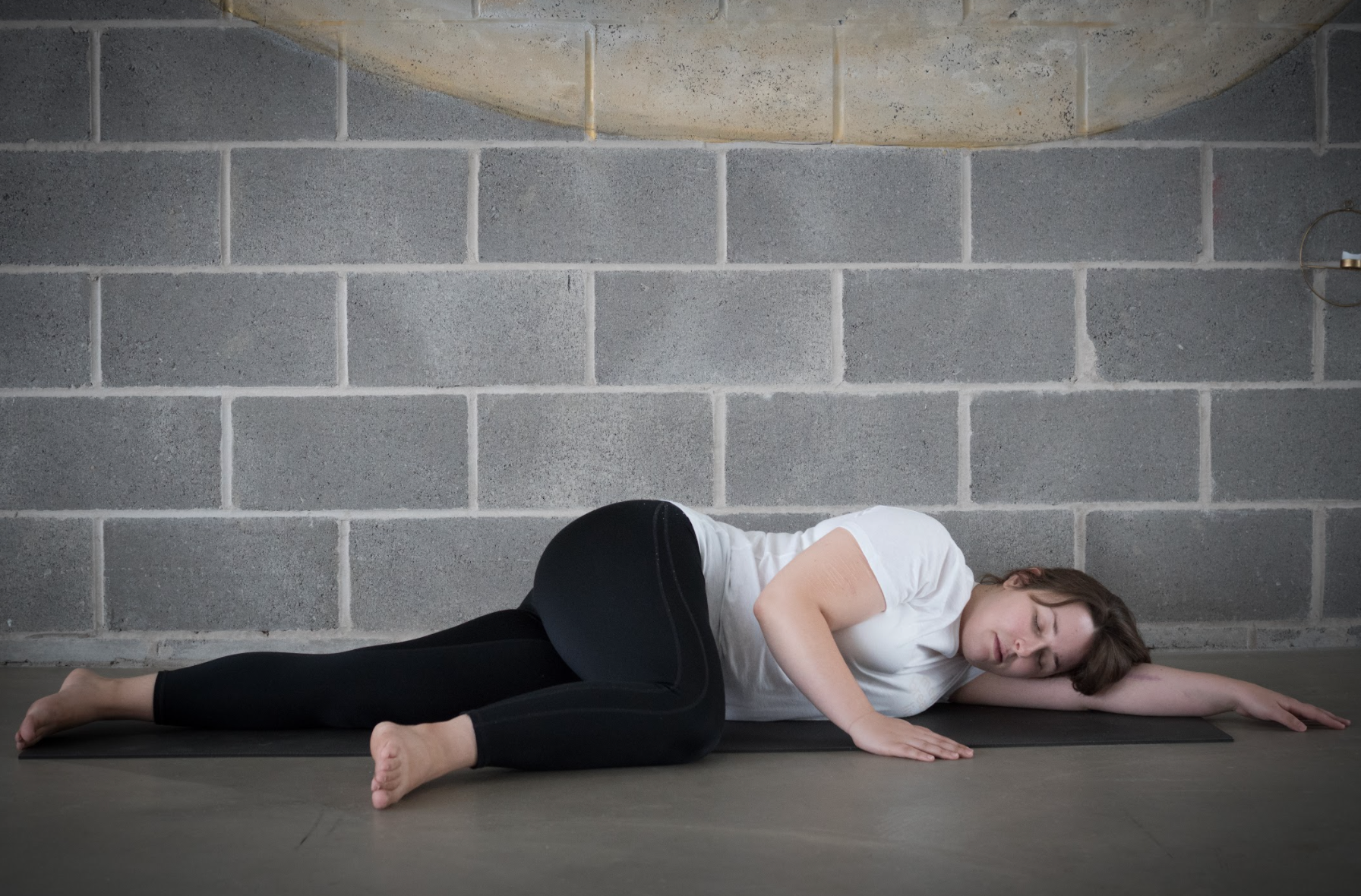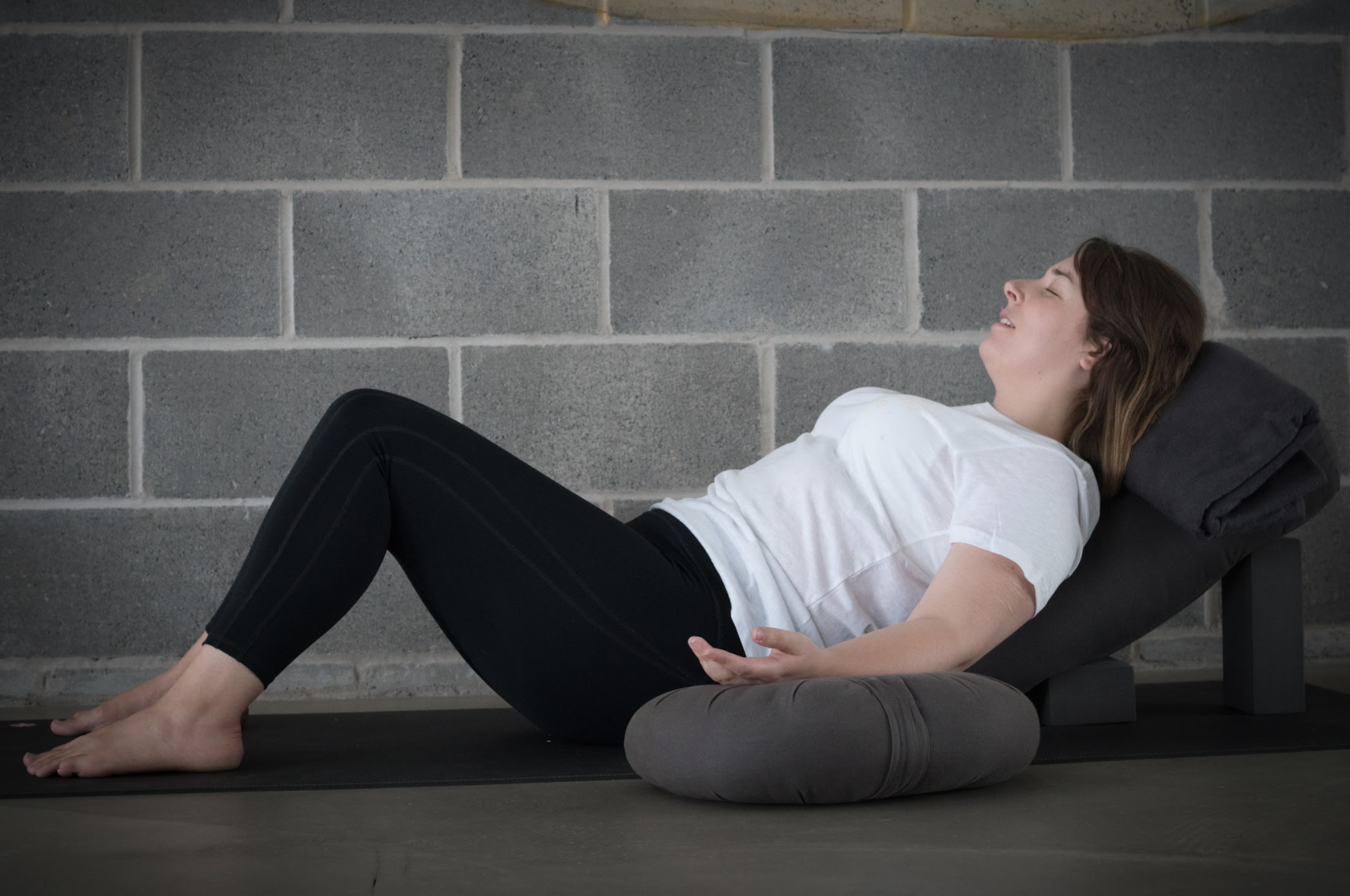Guide to the Perfect Savasana
“The stresses of modern civilization are a strain on the nerves for which savasana is the best antidote.”
— BKS Iyengar, 'Light on Yoga'
Savasana (pronounced sha - vas - ana, and formally written ‘śavāsana’), is proclaimed the most important pose. We know that many of the beneficial outcomes we come to yoga practice for - conditioning, flexibility, stress hormone reduction, neuroplasticity and more - all only come into effect with proper rest. Savasana, the sealing aspect of our practice is a vital opportunity for us to tap into the restoration that yoga promises us; to notice and to begin releasing those long-held tensions and compensations. It is curious and uniquely conscious type of repose, a far more deeply efficacious form of rest than the often unsatisfying sofa slump. There is something about savasana, and meditative forms, that more deeply tone and train the capacity of the parasympathetic nervous system. Further, it serves as clear punctuation for the practice. A settling, and a segue that reminds us of the importance of being able to separate tasks clearly in order that they can be approached most effectively - a skill that is sorely needed in a world filled with distraction. *Recent studies have shown that at any one moment in time, fully half of our thoughts have nothing to do with what is actually happening at that moment, and more concerningly, that the more distracted a person is, the less happy they are.
Tom Myers summed it up wonderfully when he said;
“Savasana is an act of self-remembering, a chance for the nervous system to appreciate the changes wrought by the exercise, for proprioception, interoception, and the autonomic balance to restore itself.”
Yet, despite its noted benefits, it’s not always love at first savasana. Whether you struggle with staying awake, or settling still, here are our favourite savasana forms and some top tips to tap into bliss!
1. The Standard Savasana
You know the one. Resting supine, with the legs stretch out a little wider than the hips, and the arms either relaxed by the sides with the palms facing up, or with the fingers lightly resting over the lower belly. People can get a little antsy about a ‘correct’ savasana, but the most important thing here is that it is comfortable! This usually means that; - The shoulders are able to relax in such a way that the outward rotation of the upper arm has the effect of spreading the collarbones and softening the the sternum and heart centre whilst allowing the shoulder to settle heavily into the ground. Palms facing up can often be seen as a notion of surrender and of openness to the possibilities of whatever the universe has in-store, whereas palms down signifies more of an inward turning and presents an opportunity to ground and to heal. - The chin settles slightly lower than the nose, such that the back of the neck is long and the weight of the head settles downwards through the chin. This might mean a fold in the top of the mat to provide a little extra lift, or a blanket placed under the back of the head, but placing something that is ‘pillow like’ and enough to bring the neck into flexion should be avoided unless it’s necessary as ideally we want to encourage the natural settling of the spine and guide us away from the dominance of modern-day forward head posture. - The sacrum can settle flat into the ground. For yogis that feel the pull of the hip flexors with the legs fully extended, or for those that have some difficulty with their lower backs a little support beneath the knees, or even, having the knees loosely bent so that the heels sit wider than the hips and the legs can rest in towards one another can provide the necessary support.
2. The Side Lying Savasana
This variation is recommended from week 16 of pregnancy onwards… but is also a great variation if you have a seasonally scratchy throat as the tucked position of the chin keeps the throat moist. It can also be a great technique to practice for those of you that have difficulty sleeping!
For pregnant yogis it is recommended to rest on the left side to remove the risk of placing pressure on the inferior vena cava. As the pregnancy progresses supports can increase, but the basics include a cushion beneath the head, and one between the knees to support the hips. It can also be nice to place a folded blanket underneath your bump to keep it feeling fully supported. - For yogis looking for extra unwind it is good to rest on the right side, with the right arm stretched up straight and the head resting on it and the knees bent to provide a gently support for balance.
3. The “I’m All In” Savasana
Sometimes its good to go all in! Especially for longer sessions it can be deeply restorative to ensure the body is fully supported. There are numerous benefits to having a soft weight applied to the body and a nice heavy woven cotton blanket can be the perfect aid in the quest for savasana serenity. Furthermore, elevating the torso is a wonderful way to help open up the chest and support ease of breathing which can be hugely beneficial for yogis with long covid symptoms, asthma or other respiratory conditions. Here are a few of our favourite arrangements (we’ve left a blanket off the images so you can see the placement of the props but all are absolutely intended to have one!)
“By doing savasana regularly, making it part of every practice we do, we cultivate the ability to relax more deeply - and that ability improves over time.”
— Rod Stryker
4. The ‘I’m not quite ready for this’ Savasana
For some the idea of resting in what can feel like a very vulnerable position is simply too much. This might be due to a traumatic experience, a specific injury or condition, or may be purely preference! In these cases to take a supported seated position is the best opportunity. Relaxation (like many things) cannot be forced! Eyes closed is entirely optional.
Top Tips for a Fidgety Savasana:
For those days that you just can’t settle here are some of our top tips to help centre your attention;
Count your breaths.
Either the length of the inhale and exhale, or the total number of breaths.
Use a mantra.
One of our favourites is the beautiful but simple “This is my body breathing in….this is my body breathing out.” Or why not pick an affirmation, or softly sing a verse from your favourite (soothing) song with attention.
Use a mudra such as hasta mala.
As you inhale tap each finger in turn with your thumbs from index to little, and as you exhale tap back from little to index.
Be gentle with yourself.
As counter-intuitive as it sounds…. Relaxing isn’t all that easy! Be compassionate when you are distracted. Be patient with the process, and understand that like any other skill, it takes time to train and at first it doesn’t always feel so smooth!
* A Wandering Mind Is an Unhappy Mind Matthew A. Killingsworth and Daniel T. Gilbert https://wjh-www.harvard.edu/~dtg/KILLINGSWORTH%20&%20GILBERT%20(2010).pdf













